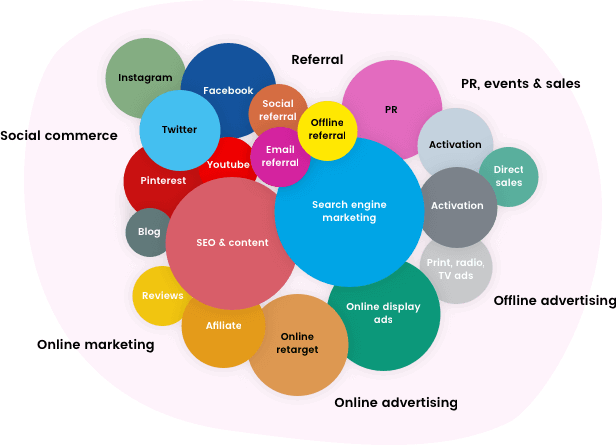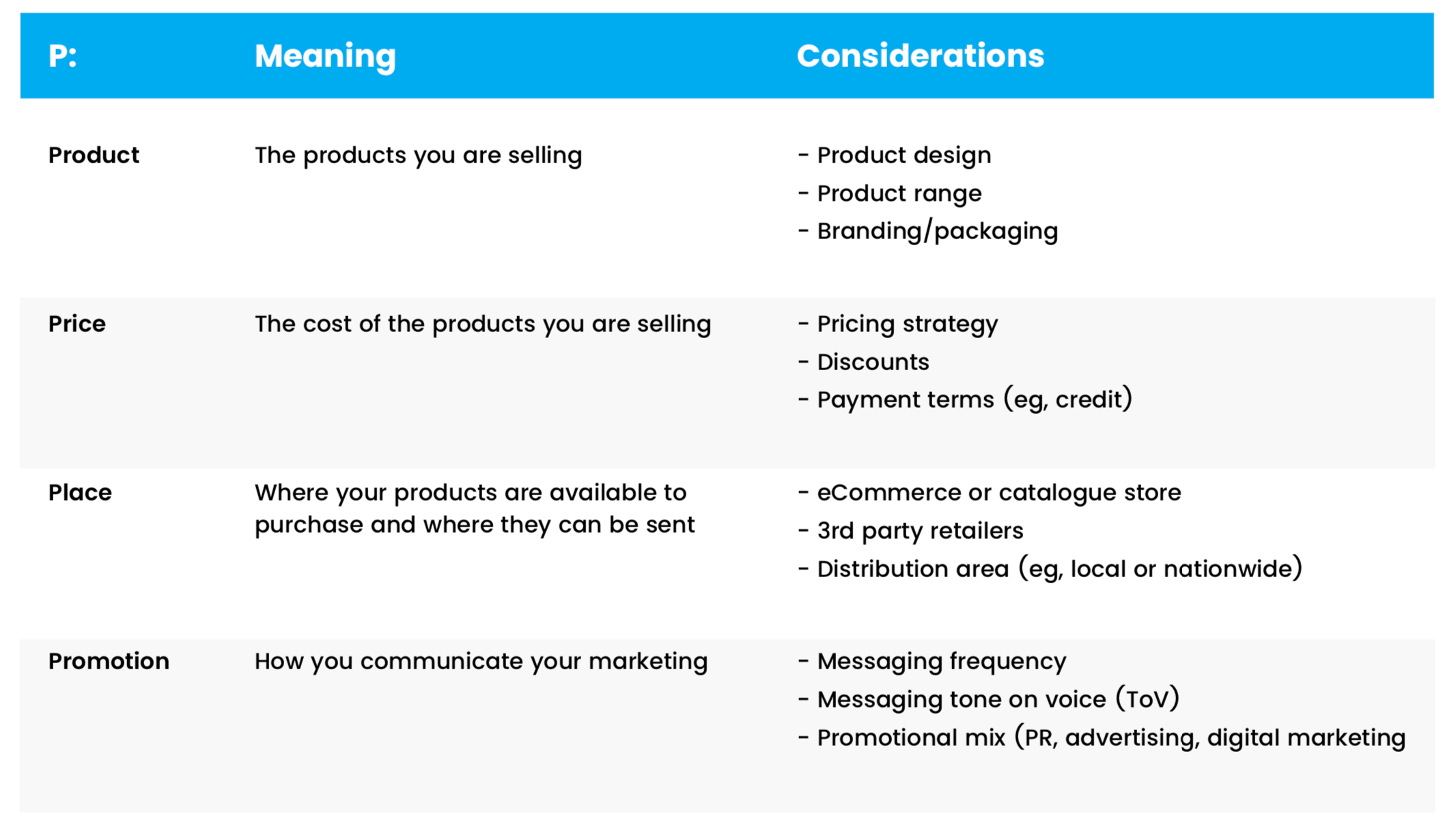Create your KPIs and goals
A Key Performance Indicator (KPI) is a measurable value that demonstrates how effectively you are achieving your business objectives. High-level KPIs focus on the overall performance of the business, and tend to be longer term, whereas low-level KPIs are shorter term goals that can also be channel specific.
The biggest mistake an eCommerce store can make is to simply align themselves with the one single goal: “we want more revenue”. Of course, this is the number one driving force of any eCommerce store, but fine tuning your goals will have a massive impact on how successful your digital efforts are (and ultimately how easy it is to reach that ‘more revenue’ goal).
The best way to create your retail site goals is with SMART goals. SMART goals are:
- Specific: each goal should focus on a specific area. Instead of incorporating multiple outcomes into one goal, create goals for
- Measurable: your goals must be trackable, and figures based, giving you the ability to track the progress over time.
- Attainable: although they need to be challenging to see growth, set realistic goals that your business can reach.
- Relevant: your goal must tie back to the bigger picture of your overall business strategy and marketing KPIs.
- Time bound: allow yourself enough time to establish and implement the strategies needed to accomplish your goal.
To give you a feel of this, here are some examples of SMART goals for eCommerce sites:
target to increase the number of monthly conversions by 20% by September
Increased mobile conversion rate by December 2020.
Decrease in bounce rate on blog content by November 2020.
Outline your target audience
Really understanding your audience requires continual user persona research. However, considering your customer type is an important first step in your marketing strategy. Getting the basics about your customers down can help to narrow your strategic focus.
Essentially, what this means is, using your own knowledge and assumptions about your customers you can create a broad sketch of your average customers and your ideal customers. We call these ‘proto-personas’.
If you’re already up and running with an analytics software, chances are you can glean some insights from here for your proto-personas. Looking at things such as gender, age, occupation and the key issues your product will solve for them will be influential in narrowing down your strategy.
Choose the right channels
Your website is the hub of your eCommerce strategy, and to make sure it accomplishes its goals you need to consider which channels are going to be the most beneficial to your business.
One of the biggest mistakes you can make is trying to target every single option that’s available to you. There is a world of different marketing channels (and within each there’s another world of different options) and deciding on the best ones can be a real challenge for your eCommerce store.
By outlining your goals and having a broad understanding of your audience, you will be better able to decide which marketing channels will have the biggest impact.
If your Q1 goals, for example, are to drive conversions of a particular product range, it will be better to focus on paid shopping channels, such as Google Shopping and Facebook Catalogues than sharing multiple Instagram posts a day. That’s not to say that having a full mix of channel activity won’t bring you a greater overall return. Instead, it’s important that you focus on optimising your high impact channels first. If you’re selling to trade customers, the likelihood is that LinkedIn is going to be a much better social channel than TikTok.

We’ve written an article that will help when choosing the right social network for your industry (plus there are also some handy tips on how to build your brand authority with social media).
Consider your marketing mix
Now you know what you want, it’s time to make sure that you’ve got what it takes to get it! Whatever the product is that you’re selling, it’s important to consider your marketing mix. This is the combination of factors that you are able to control that will influence your customers want or need to purchase your products.
The marketing mix is also known as the ‘4 Ps’ of marketing, which stand for the following:


Ironing out these logistics is an important step in seeing the bigger picture of your marketing.
Outline your USPs & value proposition
What makes your brand stand out? Why should your customers buy from you over another retailer? What’s going to keep them coming back? The answer might be quality, convenience, reliability, friendliness, cleanliness, courtesy, customer service or maybe something entirely different. To succeed in the busy world of online sales, you need to outline your unique selling points.
Remember, price isn’t the only reason people buy. If your competition is beating you on pricing because they are larger, you have to find another sales feature that addresses the customer's needs and then build your sales and promotional efforts around that feature.
Your USP should be linked to your company value, so we aren’t able to tell you what your USP should be, but
here are a few areas to consider:
— Price
Lowest price Price matching Delivery cost
— Service/experiential
Great customer service
Fast delivery
Aftercare
Experience/expertise
— Emotional
Charity support
Ethical practices
— Age of business — Social proof
Reviews/ratings
Social media following
— Location Convenience
Prestigious location
— Quality guarantees — Personality
Tone of voice
— Loyalty programmes
Revisit your strategy often
Your strategy shouldn’t be static. You will need to tweak and change this as time goes on to keep it relevant and ensure continued growth. Your business needs, the timeframe of your goals and economic climate will determine how often your marketing strategy should be revisited. But please, do revisit it.
